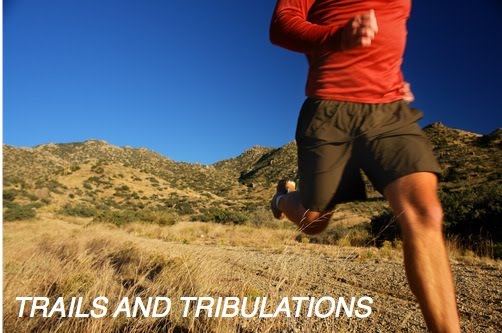Since then I have had a couple of weeks training and the Northern 12 stage in Catterick, the training has been going well, felt a little tired at times with the amount of miles and sessions completed, but I have been sure to take the easy weeks easy to give me time to recover.
The relay were ok, i was disappointed with the time (23:04 for ~4.6 miles) and the fact i had the sprint of shame at the end. I am staying positive and looking forward to the National 12 stage where i will hope to improve on my time from last year.
The next little thing i want to talk about is the minimalist/barefoot movement that seems to be rumbling on in the back ground. I was bought the book 'Born to Run' (pictured) by my girlfriend for Christmas. She was recommended it after telling people i was a runner, it is considered the bible of barefoot running. Now i'm not going to tell you the whole story, you'll have to read that yourself, however there is an interesting underlying theme about minimalist and barefoot running and the evidence backing it up is quite compelling. The thought is that our new trainers with their motion control and cushioning is doing more harm than good. After all we've survived for thousands of years without them and it wasn't until the 1970's that these sort of trainers were developed. Rather than land on our forefoot, as nature designed, allowing our feet, achilles, calves and legs take the force the new trainers cause us to land on our heels putting more pressure on our knees, hips and backs while also causing damage to our achilles and calves. If you don't know any runner who has had achilles, plantar faciitis or calve problems they must all be made of steel/barefoot runners! It has been proved there has been an increase in injuries of this sort rather than a reduction. After reading this I thought to myself it all made sense and why not give it a try, I knew I ran the risk of aggravating my achilles injury but my thought it was caused by the way i was running so changing it it may help. I also realised it would and still will be a slow process gradually removing my orthotics and changing my shoes. I have made conscious efforts when going out running to land on my forefoot which inturn shortens your stride but puts less pressure on the various points on the body.
With regards to the shoes there has been the movement towards the 'less is more' ethic from shoe companies, for example the Nike Free's, Saucony also released their first foray into the minimalist area in 2010 with the introdction of the Kinvara, a lightwight, low heel to toe drop shoes (4mm compared to 13-18mm in most trainers). I have recently received my pair and from the few runs i have been on I am delighted with them. They feel a lot lighter on my feet and have noticed a fair increase in my steady run pace. I will definitely be getting another pair once my Hurricanes give up. I will keep you informed in the future about how they hold up and thoughts on them.
I have recently received my pair and from the few runs i have been on I am delighted with them. They feel a lot lighter on my feet and have noticed a fair increase in my steady run pace. I will definitely be getting another pair once my Hurricanes give up. I will keep you informed in the future about how they hold up and thoughts on them.
Next up will be the National 12 stage in two weeks time, I expect i will be puting in a couple weeks of hard training, racing and then preparing for my favourite time of year, TRACK!
Bailey
With regards to the shoes there has been the movement towards the 'less is more' ethic from shoe companies, for example the Nike Free's, Saucony also released their first foray into the minimalist area in 2010 with the introdction of the Kinvara, a lightwight, low heel to toe drop shoes (4mm compared to 13-18mm in most trainers).
 I have recently received my pair and from the few runs i have been on I am delighted with them. They feel a lot lighter on my feet and have noticed a fair increase in my steady run pace. I will definitely be getting another pair once my Hurricanes give up. I will keep you informed in the future about how they hold up and thoughts on them.
I have recently received my pair and from the few runs i have been on I am delighted with them. They feel a lot lighter on my feet and have noticed a fair increase in my steady run pace. I will definitely be getting another pair once my Hurricanes give up. I will keep you informed in the future about how they hold up and thoughts on them.Next up will be the National 12 stage in two weeks time, I expect i will be puting in a couple weeks of hard training, racing and then preparing for my favourite time of year, TRACK!
Bailey

